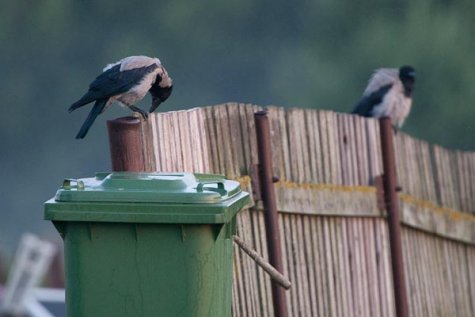Change of hooded crow contingent
Photo: Arne Ader
Translation: Liis
Early morning. Hooded crows on fence
Hooded crow Hallvares Corvus corone cornix
Flocks of hooded crows as well as groups can be seen, circling around and checking out interesting news. Summertime crow’s nests visible in the bare trees are also examined.
It seems that a great part of the hooded crows that were nesting here have already migrated to the south and the group seen now has arrived from the north or east.
The crow population is changing, five to seven thousand hooded crow pairs nested here in summer but the winter number compared to the nesters is remarkable and may reach up to 300 000 birds.
Outside the breeding period hooded crows behave socially. In cities and villages they often keep company with jackdaws, and we can meet them almost everywhere in cultured landscapes. They manage successfully to make use of the leftovers from people as well as of animals killed by car wheels – if one crow has found a food object very soon all other conspecifics will know. How does the information move so quickly?
The back plumage of crows is ash grey as is the belly and part of the underwing. Head plumage and beak are black, likewise the chest, legs, wings and tail.
As to eye colour, the eyes of this year’s young birds still leave an impression of grey; the eyes of adults seem black. When a crow opens its beak the red mouth shows up.
Observations of hooded crows: LINK
Black rooks are increasingly rarely seen: LINK









